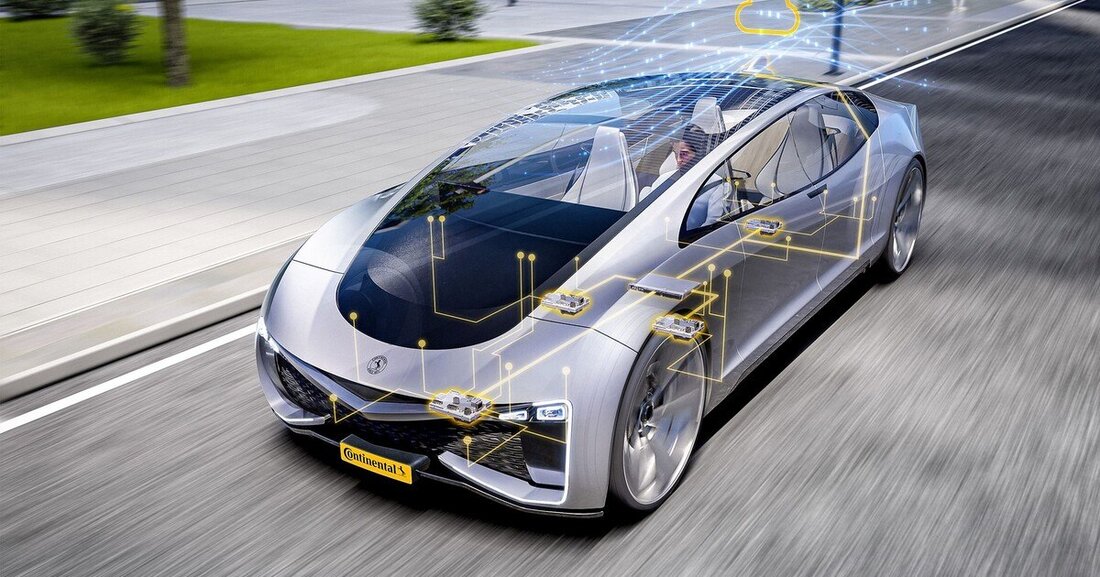The new auto nervous system
Continental and Infineon are developing an innovative electrical and electronic architecture for the car of the future.

The new auto nervous system
In the future, Continental will cooperate with semiconductor manufacturer Infineon Technologies AG in the development of server-based vehicle architectures. The goal is a tidy and efficient electrical/electronic architecture with central high-performance computers and a few, powerful zone control units instead of up to a hundred or more individual control units as before. "With our new architecture solution, we are making the automobile fit for the future. The cooperation with Infineon is now an important step in quickly realizing this development for our customers," says Gilles Mabire, CTO Continental Automotive. Continental now uses the AURIX TC4 microcontroller from Infineon for its ZCU platform. Thanks to special memory technology in the AURIX TC4, the vehicle software is on standby. Functions such as parking assistance, air conditioning, heating and suspension are ready within fractions of a second when the vehicle is started. With its platform approach, Continental supports the different requirements of automobile manufacturers. You can tailor your architecture by individually configuring the number of HPCs and ZCUs as well as their interaction and arrangement in the vehicle.
“The growing variety of functions in vehicles requires more and more computing power and increasingly complex software applications,” says Gilles Mabire. Thanks to the platform strategy, proven application software can, for example, be used in new vehicle models. This significantly reduces the time-consuming validation effort and new functionalities can be brought into series production much more quickly. A key element of the new microcontroller series is the RRAM (Resistive Random Access Memory) memory technology used by Infineon. This is already being used successfully in chip cards, for example for cashless payments and for secure authentication. RRAM technology is now being used in the automotive sector for the first time.
“The cooperation with Continental makes it possible to bring RRAM technology into automobiles,” says Peter Schiefer, President of the Automotive Division at Infineon. The use of high-performance zone control units is the next crucial step towards a software-defined vehicle. A first important step for Continental was the development and delivery of an HPC high-performance computer for the electric vehicle models ID.3 and ID.4 from Volkswagen. In the E/E architecture of the future, a zone control unit bundles all electronic and electrical connections in a local area of the vehicle. For example, Zone Control Units take over all control as well as data and communication management tasks in the front right, front left and rear vehicle areas. The fact that the software components will be bundled centrally in the future will increase cybersecurity and update capability.

 Suche
Suche
 Mein Konto
Mein Konto